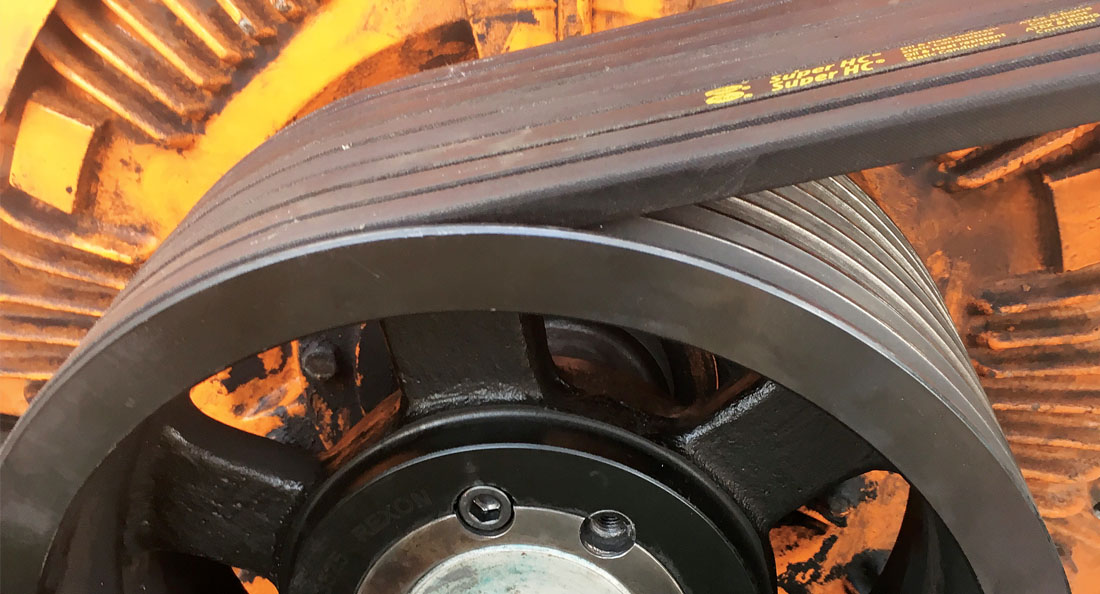As mining companies look to cut costs and reduce downtime associated with machinery, Gates offers the market its Predator V belts. Australian Mining writes.
Mining operations are often exposed to the harshest of climates and naturally, this has an effect on machinery and equipment that must withstand the rigours of the environments they operate in.
A problem for many mining companies, therefore, revolves around the ability to reduce costs associated with the maintenance of equipment, while sustaining a consistent level of throughput.
The importance of properly installing machinery such as crushers, conveyors, pumps and screens at the beginning of operations is the best way to lower maintenance costs later on, according to Inenco’s (CBC Australia) product manager belts and rubber products, Mark O’Brien.
“Generally, I find that people don’t put much effort into maintenance, they’ll fix the job frequently to get it back working rather than setting it up correctly at the start,” O’Brien says.
Noticing the need for more durable belts on mine sites, CBC Australia suppliers Gates has developed the Predator V belt, which requires less maintenance and is designed to operate in a variety of mining conditions.
“The V belts are a very economical solution given their high quality and their ability to work particularly well in high-volume operations such as mine sites,” O’Brien says.
“That is why the mining industry is so popular for us, companies are often operating in harsh environments and therefore need more durable equipment.”
As such, Predator belts offer solutions to a variety of situations that are often faced by mining companies, helping them reduce downtime, maintenance costs and losses in productivity.

Debris damage, for example, is a common issue faced by drive belts and pulleys when operating in harsh environments due to rocks, sand or small dust and dirt particles passing guards.
Having a bareback cover allows for the resistance to debris and for the belt to slip under extreme shock conditions, reducing heat build-up and prolonging belt life.
Predator belts also have a double layer of fabric that helps resist debris damage. Gates recommends identifying expanded metal guards that let debris pass through and making guards solid on the top and sides.
Another issue is that belt drives are susceptible to losing their tension regularly, an issue that is rectified through Predator belts using tensile cords, which significantly reduce stretch, meaning less frequent re-tensioning and increased productivity.
Gates offers the Predator belts as both a single belt and the powerband belt.
The single belt is designed for use on metric multi-groove sheaves, deep groove sheaves and drives with limited room for ‘take up.’ They are often used when powerbands aren’t available.
The Predator powerband belt on the other hand, replaces several belts with a single belt, which features a multiple layer tie band that provides lateral rigidity to prevent belts from turning over or coming off the drive.
Belts are often exposed to applications with extreme shock-loads that can result in a shorter belt life, sometimes less than one month.
As O’Brien points out, mining companies can leverage off a reduction in maintaining or even replacing belts through the predator powerband.
Its tie band helps resist vibration and lateral movement, keeping the belt from ‘dancing’ out of the grooves.
Additionally, the near-zero stretch tensile cords prevent slippage and allow the belt to withstand the shock that often compromises other belts.
While the functionality of the Predator belts is imperative to mining companies reaping its benefits, CBC Australia has also acted on the need for proper installation and training using the equipment.
“Part of the business is that we offer engineering support and training, we believe that when you’re buying a new product, setting it up correctly is crucial,” O’Brien says.
Pointing to the scintillating conditions that mining companies often face in remote regions, particularly when temperatures can reach 40 degrees belts have to work harder. Combine this with lack of maintenance and tension belts are exposed to excessive heat, emphasising the necessity of having durable belts.
As such, CBC Australia has experienced consistent demand for the Predator belt products given the market often “runs in circles.”
With maintenance programs often being pushed aside by mining companies, the need for durable belts is again reaching a peak given the vast benefits they offer.




